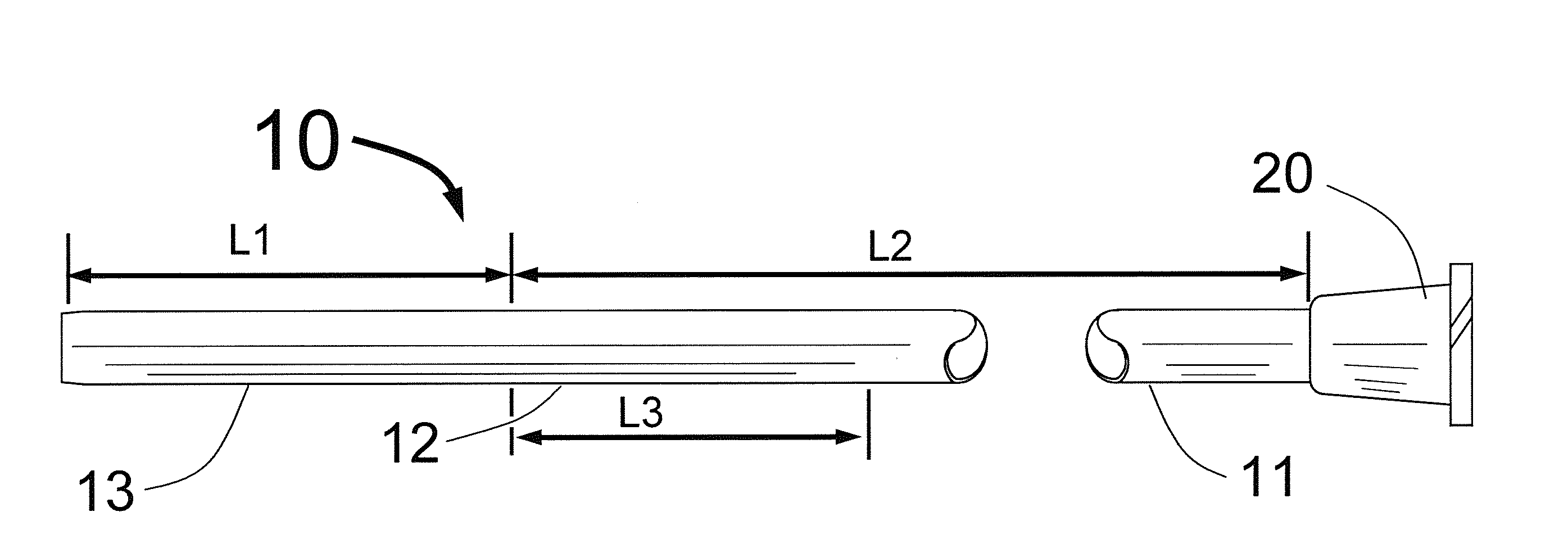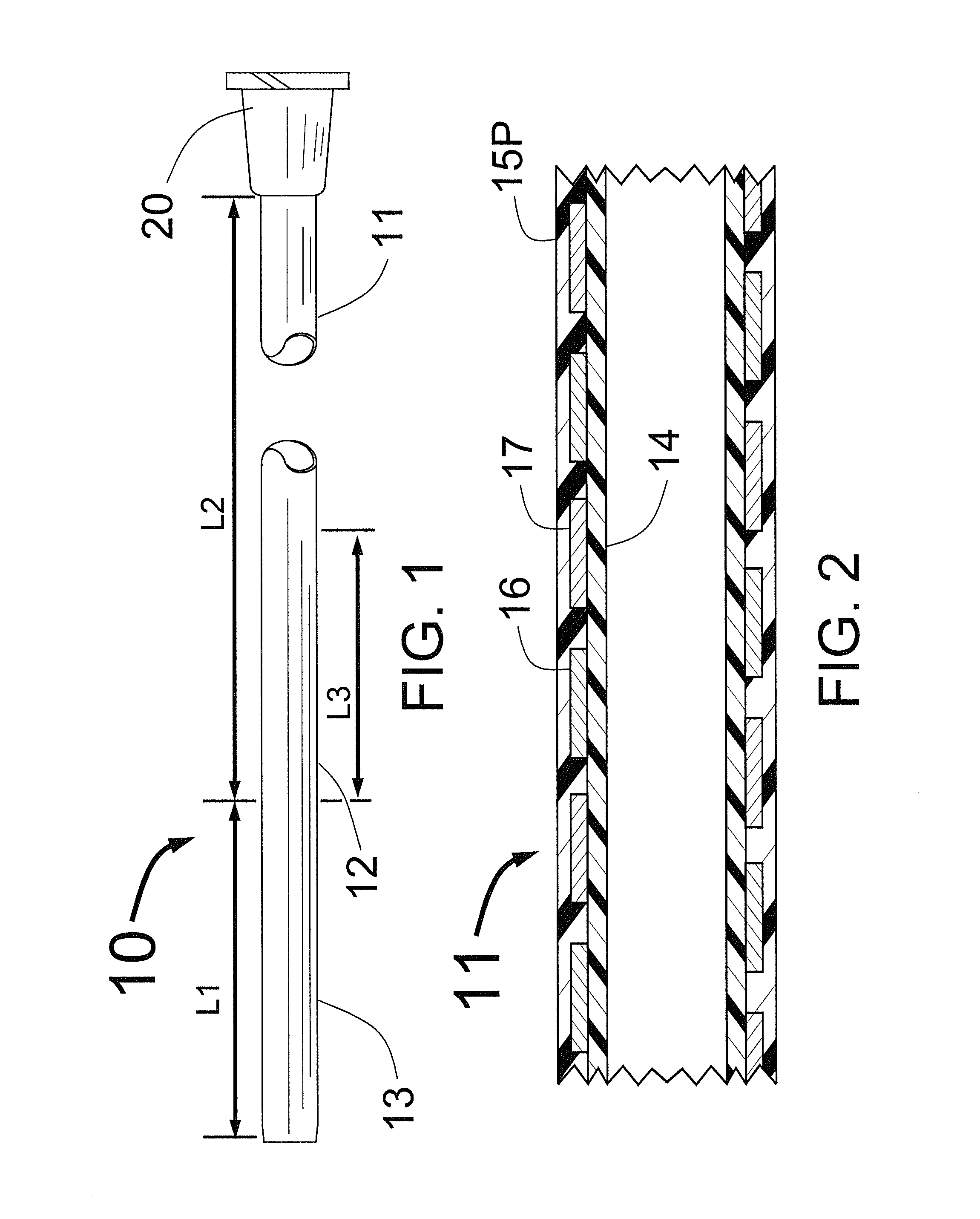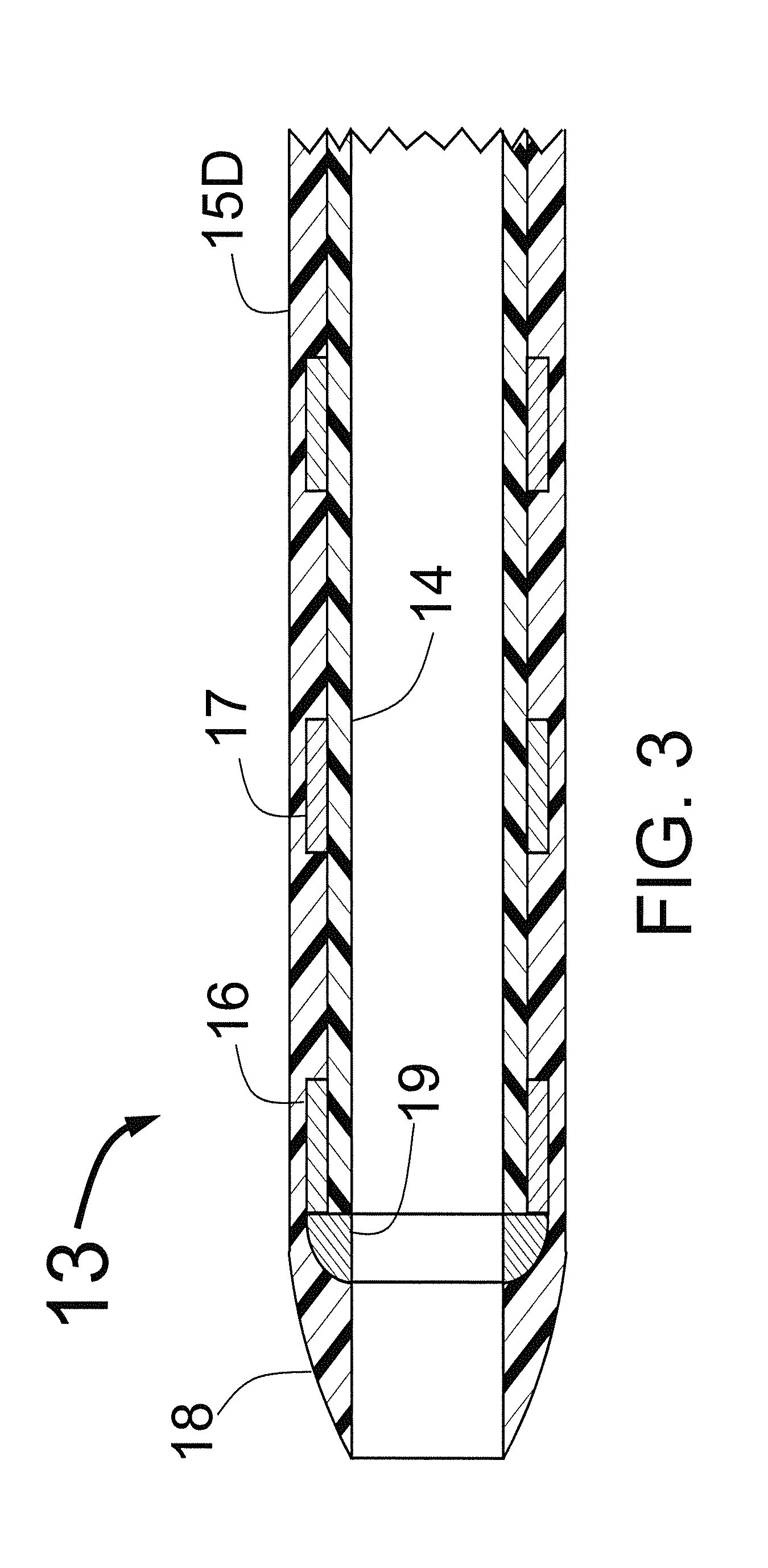Carotid sheath with flexible distal section
a technology of flexible distal section and carotid sheath, which is applied in the direction of catheters, coatings, etc., can solve the problems of difficult positioning of such a sheath or guiding catheter, difficult to access the common carotid artery, and more invasive and potentially life-threatening procedures of surgical endarterectomy, etc., to achieve enhanced sheath tracking, greater flexibility, and enhanced rigidity
- Summary
- Abstract
- Description
- Claims
- Application Information
AI Technical Summary
Benefits of technology
Problems solved by technology
Method used
Image
Examples
Embodiment Construction
[0017]FIG. 1 shows a sheath 10 having a comparatively flexible distal portion 13 having a length L1, a comparatively long and stiff proximal portion having a length L2 and a comparatively short transitional section 12 with length L3. Typical lengths L1, L2 and L3 would be L1=15±5 cm, L2=75±10 cm and L3=3±3 cm. The total length of the carotid sheath should be about 90 cm. FIG. 1 also shows a Luer fitting at the proximal end of the sheath 10 which is typically used for injecting liquids through the sheath 10 or for connecting a Touhy-Borst fitting for performing carotid stenting. The Luer fitting with the Touhy-Borst fitting also allows for the passage of a dilator. Though it is not shown in FIG. 1, the present invention also envisions having a Touhy-Borst fitting fixedly attached at the sheath's proximal end instead of the Luer fitting. This would save one step for the operator by not requiring the attachment of a separate Touhy-Borst fitting to the Luer fitting.
[0018]FIG. 2 shows a ...
PUM
| Property | Measurement | Unit |
|---|---|---|
| Length | aaaaa | aaaaa |
| Length | aaaaa | aaaaa |
| Diameter | aaaaa | aaaaa |
Abstract
Description
Claims
Application Information
 Login to View More
Login to View More - R&D
- Intellectual Property
- Life Sciences
- Materials
- Tech Scout
- Unparalleled Data Quality
- Higher Quality Content
- 60% Fewer Hallucinations
Browse by: Latest US Patents, China's latest patents, Technical Efficacy Thesaurus, Application Domain, Technology Topic, Popular Technical Reports.
© 2025 PatSnap. All rights reserved.Legal|Privacy policy|Modern Slavery Act Transparency Statement|Sitemap|About US| Contact US: help@patsnap.com



